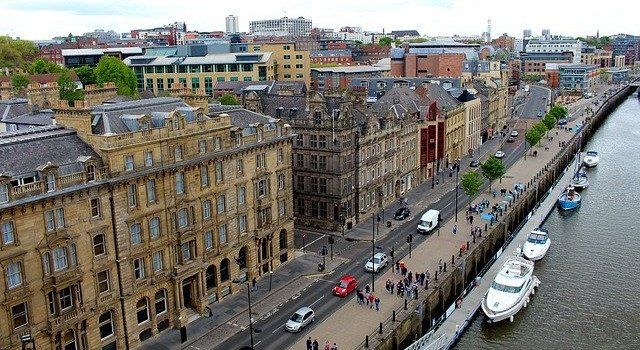If you are seeking some additional income and you have sufficient funds for another mortgage, is a buy-to-let investment worthwhile? With the increase in rental property income over the past few years, you could potentially make a rental yield of 5% to 10% if you choose the right property and get a good mortgage deal.
While it may be possible to make a profit, you need to be aware of the potential risks. Letting out a property and making a profit is not as easy as you would think. As a property investor, you have to ensure that you have done the right research to guarantee the rent provides a yield that will pay for the monthly mortgage repayments.
As a buy-to-let landlord, you should ensure you have sufficient financial reserves to cover the deposit. On approval of a mortgage, financial consideration should be given to landlord's insurance. Finding a reliable tenant to pay the rent may also incur a finder's fee and possibly an ongoing management charge from a letting agent. You need to ensure that you covered every financial detail to make sure it is a rock solid investment.
If the property needs some renovation, it is unlikely that a lender will grant a buy-to-let mortgage upfront. For a successful buy-to-let mortgage application the house, or apartment, needs to be in a habitable state for a prospective tenant. So if a property is a little rundown, you may need to provide additional finances to ensure you secure a buy-to-let mortgage. In such scenarios, it is often better to purchase with cash and remortgage six months later after renovations and the property is rented out. However, this does not mean that you cannot secure a suitable property from an auction in today's market.
Finding the right mortgage deal for your rental property
If you research the mortgage market, you will see that there are some competitive buy-to-let deals out there. Unfortunately, since buy-to-let loans pose a higher risk to lenders, the interest rates tend to be higher than those offered for standard residential loans. That is why it is vital to ensure you get the best loan deal suited to your financial situation.
Currently, most landlords have tenants on contracts of between six months and one financial year. Were you aware that most standard mortgage deals for landlords offered by banks and building societies stipulate in the terms that you are not allowed to provide a tenant with a contract longer than one year?
Whatever happens we are here to help you find the right deal.
How much rental income can you achieve
If you want to know the rental income that you should expect to make, refer to local property listings and speak to some local letting agents. Your lender will also be interested to know your potential rental income. It will serve as a basis for them to decide how much money they will lend you.
You need to decide whether you are renting the property out unfurnished or fully furnished.
And what section of the market are you targetting; individuals, couples, families or multiple occupancies? The larger yields tend to come from from homes with multiple occupants (HMOs), especially those located in popular areas with modern decor, fittings and facilities.
Where are you thinking of investing? Popular areas for students and young professionals are Jesmond, Heaton, the city centre, quayside, Gosforth and Fenham.
That's not to say other areas such as Wallsend, North Shields, Whitley Bay, Tynemouth or even Gateshead also have some potential properties with good rental yields.
One of our advisers will help you to choose your best options and how much you can potentially borrow after considering your expected rental income yield.
Summarizing your costs and potential profit
Ideally, you should aim for a rental income that is at least 1.25 times higher than your mortgage commitments. You need to factor in your upfront mortgage costs, monthly loan repayment fees, insurance, ongoing maintenance, letting agent's fees if applicable, and other recurring expenses. You should also allow for potential vacant periods where the property is empty, ideally two months but no more than four otherwise the property would probably not be economically viable.
Other potential property taxes to take into consideration
In April 2016 the government introduced higher rates of stamp duty on purchases of additional residential property above £40,000, such as on buy-to-let properties and second homes. The higher rates will be 3% above the current ones for first-time buyers. In simplistic terms, stamp duty will remain at 0% for properties valued below £40,000 but will increase by an additional 3% for all properties valued over £40,000 purchased for buy-to-let.
For example, if you bought a buy-to-let property for £100,000, you would now expect to pay an additional 3% on stamp duty. Similarly for a property between say £125,000 and £250,000, a stamp duty charge of 5% would now apply.
That's fine if you have the additional cash to pay for the stamp duty up front. An alternative approach would be to factor this extra cost into the rent to try and recoup the stamp duty back over time. However, you may need to check that your rent is still competitive in the local area to ensure that you are still able to acquire a mortgage for the property.
In April 2017, mortgage-interest tax relief was phased out. The current alternative scheme, a form of tax credits, means most lanslords are now a little worse off.
From 2018 landlords may also be required to pay what is effectively a “green tax” of up to £5,000 to make the properties in their portfolio more energy efficient. Until very recently, improvements like cavity wall filling, loft insulation, and new boilers were undertaken in older properties under the government's Green Deal scheme.
Typically tenants applied for loans from the scheme and then repaid them after benefiting from lower energy bills. In the future, the government may feel that the landlords must undertake and pay for this work. This move could potentially affect thousands of buy-to-let landlords who own older properties that are less energy efficient. In April 2018, fines of upto £4,000 were introduced for landlords that did not adequately meet energy-efficient rules.
If you decide to go ahead and build a buy-to-let property empire you want to consider any implications it may have on your inheritance tax.
Inheritance Tax is a tax on the estate (the property, money, and possessions) of someone passes away. The current rate for inheritance tax is 40%, and the threshold is currently £325,000 for an individual or £650,000 for a couple.
So if you are planning to have a substantial buy-to-let property portfolio worth over £325,000, it may be advantageous to contact a financial adviser in Newcastle upon Tyne who specializes in these matters.
And if you already have a property portfolio that you are looking to offload, you may be seeking advice on capital gains tax. Now you are thinking of selling up but you are concerned about a potential large tax bill arriving on your door step.


